Chickweed – Stellaria spp.

- Author

- Name
- Sam Sycamore
- About
- Sam Sycamore is a writer, teacher, and forager who's been working with wild and cultivated plants for over a decade. He holds a B.S. in Biology from the University of Louisville. He previously hosted The Good Life Revival Podcast, where he explored topics related to permaculture, rewilding, climate change, and sustainability.
- Published on
- Last updated
Table of Contents
- What is Chickweed?
- Is Chickweed Edible?
- Why Forage For Chickweed?
- Key Characteristics
- Etymology and Taxonomy
- Common Names
- Taxonomical Lineage
- Edible Wild Chickweed Species
- Where to Find Chickweed
- When to Gather Chickweed
- How to Harvest and Prepare Chickweed
- How to Sustainably Work With Chickweed
- Chickweed Lookalikes
- Mouse-ear Chickweed
- Scarlet Pimpernel
What is Chickweed?
Chickweed is a very common tender annual herb found worldwide—an exceptionally nutritious "weed" with a pleasantly mild flavor.
Chickweed is considered "naturalized" outside of its native range, which is to say, it was "invasive" at one point in time many eons ago, but the invasion is now over, and it has become established to the point that it is a fixture on the global landscape.
Chickweed thrives everywhere humans go, whether we pay attention to it or not. Enjoy it anytime you stumble upon it—as long as you know the specimens are clean and dog-pee-free!
Is Chickweed Edible?
Yes, the entire plant is edible. The leaves, stems, flowers, and seeds are all edible raw. Chickweed is a great source of vitamins and minerals, especially vitamin C and beta-carotene. It's also a source of omega-6 fatty acids.
Why Forage For Chickweed?
Chickweed is one of the most ubiquitous and abundant edible wild greens on Earth. Once you learn how to identify it, you'll realize it's been hiding in plain sight right all around you for your entire life. It outcompetes essentially all of our cultivated greens in terms of nutrient density. All parts are edible raw, it's very easy to identify, and there's no risk of harming the plant population or the local ecosystem by harvesting it.
Many farmers and gardeners consider chickweed an unwanted nuisance, but you could make the case that it's actually providing valuable services to your soil and your crops by carpeting the bare ground and holding warmth and moisture down at surface level.
Key Characteristics
- Distinct pointed-oval leaf shape
- Opposite leaves
- Chickweed flowers have five white petal that are deeply cleft so as to look like 10
- five hairy green sepals
- slender, succulent stem
- single line of white hairs running down each stem and leaf stem
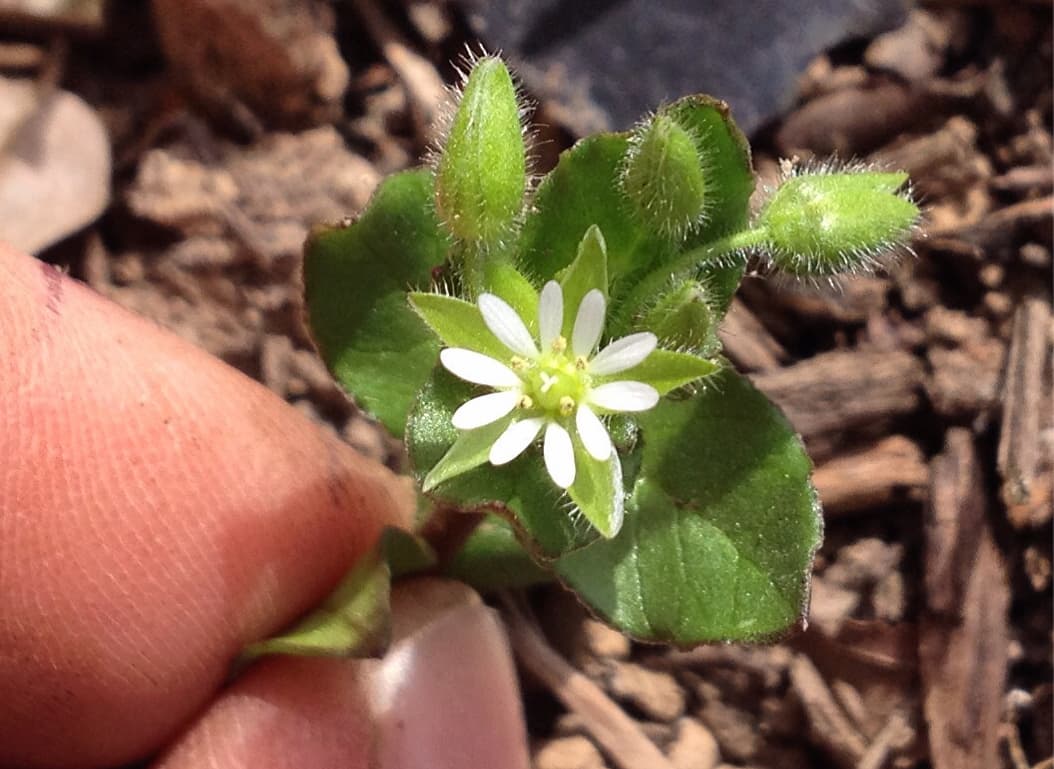
Five deeply-cleft white petals that almost look like ten—that's chickweed, alright!
Etymology and Taxonomy
Common Names
Chickweed is also known as winterweed, birdweed, and chickenwort.
Taxonomical Lineage
- Caryophyllaceae (Carnation/Pink) family
- Stellaria genus
Source: Wikipedia
Edible Wild Chickweed Species
According to Sam Thayer (Incredible Wild Edibles, 2017), what is commonly referred to as "common chickweed" or Stellaria media is in fact three separate but nearly identical species: S. media, S. pallida, and S. neglecta. The latter tends to be larger overall, while S. pallida is especially small. For foraging purposes it's not necessary to determine which of the species you have; you can treat all three types of chickweed the same, as we will for the rest of this profile.
There are many other species in the Stellaria genus found throughout North America that are also edible. The genus as a whole contains almost 200 species.
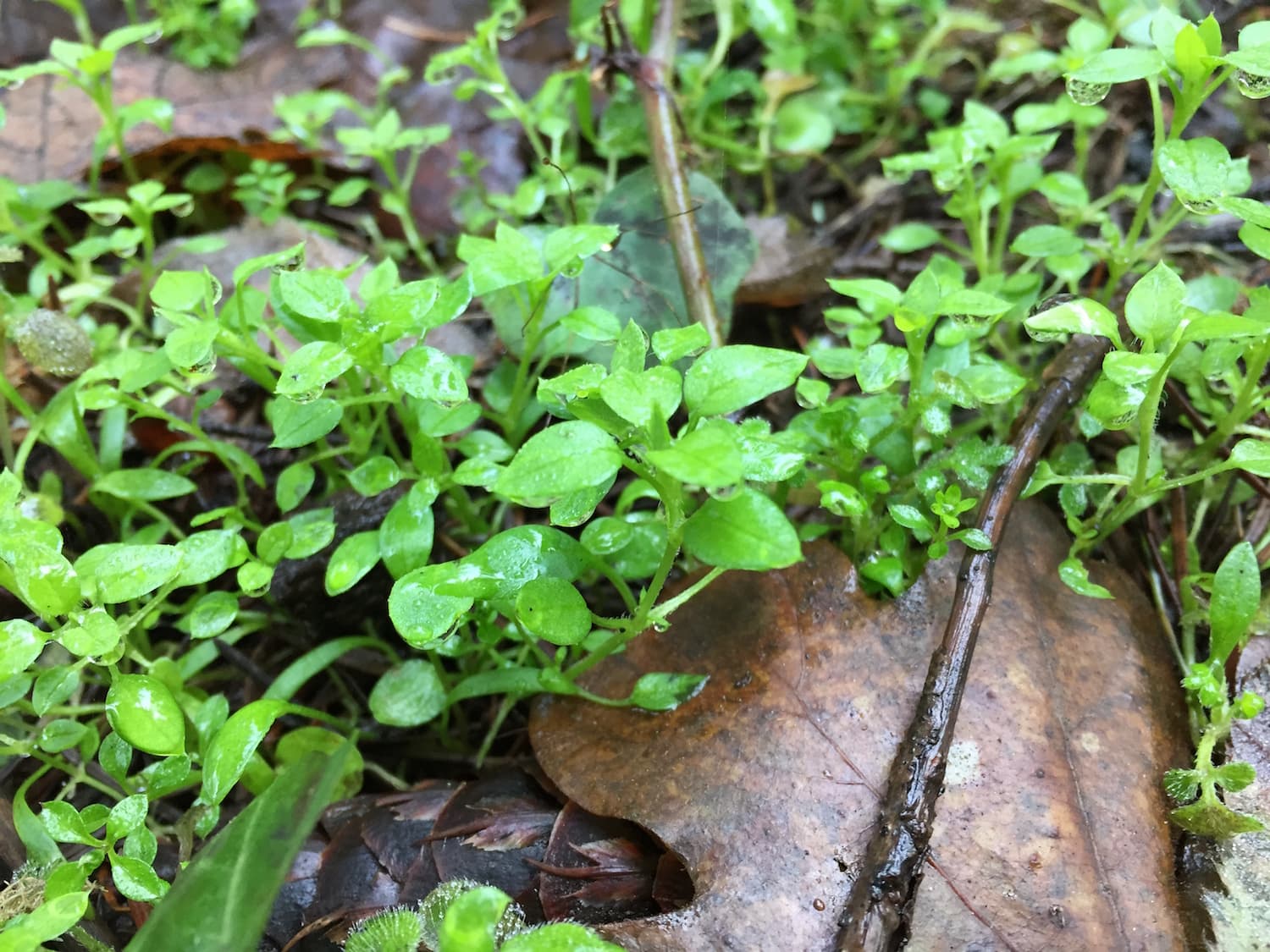
Young chickweed sprouts emerging in late fall.
Where to Find Chickweed
Chickweed is found nearly everywhere across North America. It's common in the fertile soil of garden beds but happily grows on any recently or routinely disturbed ground. It often lines trails and pathways in woodland spaces, and uou'll find it in every possible nook and cranny in urban and suburban environments.
Chickweed generally refers moist soil and cooler, wetter conditions, and tolerates much more shade than other similarly "weedy" species.
Originally from Eurasia, chickweed is now naturalized all around the world.
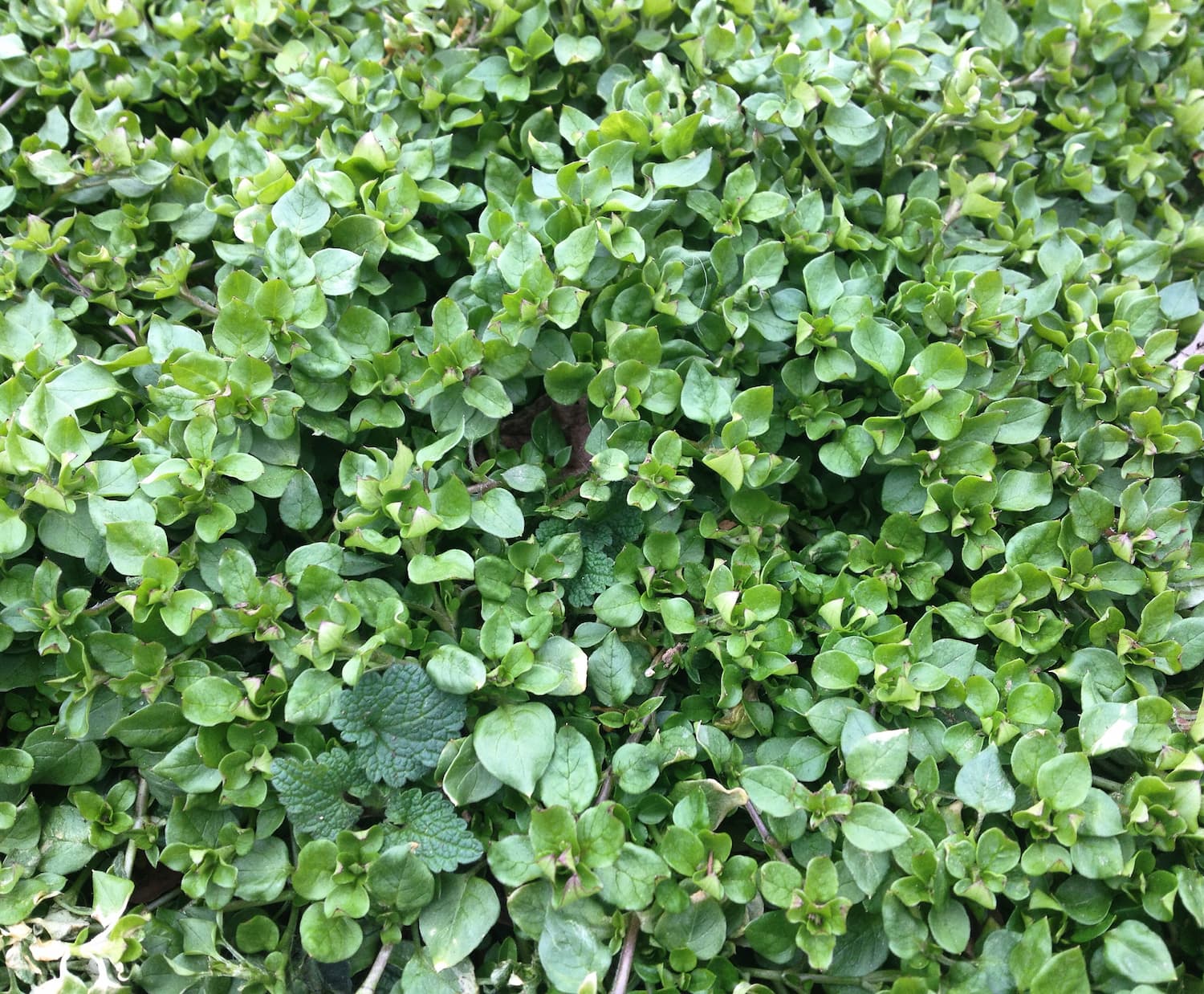
Chickweed can quickly take over recently disturbed soil.
When to Gather Chickweed
Throughout the Northern Hemisphere, chickweed is most active in early to late spring and fall, sometimes persisting all summer and possibly all winter in more mild climates.
Chickweed tolerates light freezes, and chickweed seeds can germinate anytime the soil temperature is above freezing. It doesn't love dry or hot conditions above the mid-80s Fahrenheit, so it becomes increasingly less common on the landscape as temperatures climb in the summer.
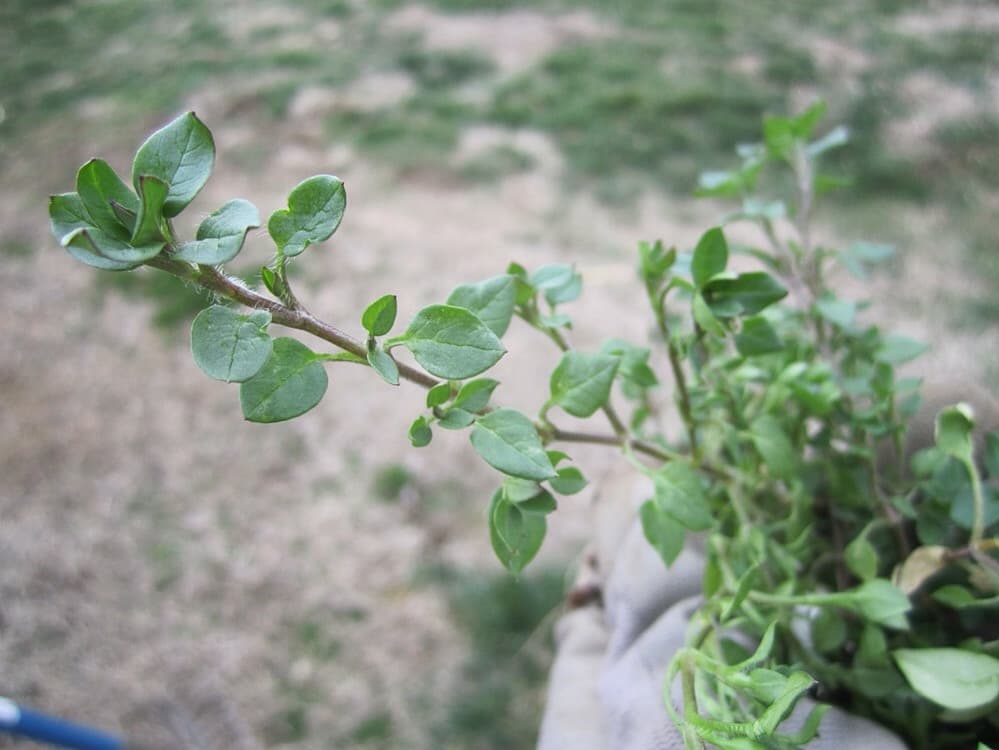
This healthy chickweed specimen was already quite mature in late winter in Kentucky.
How to Harvest and Prepare Chickweed
When you stumble upon a young chickweed sprout, you can technically pull up the whole plant and consume it raw. That said, you probably want to separate the root from the stem. You can use a pair of scissors or simply pull and tear with your hands. The chickweed won't mind the rough haircut!
Unlike many other edible wild greens, chickweed is still delicious when in bloom.
As the plant matures, it grows in a trailing, matted vine-like habit—sometimes propping itself up with enough density—and becomes too stringy and fibrous beyond the top inch or two at the tips of the stems. At this point it's best to harvest by clipping off those tops with scissors or a sharp blade.
The flavor of fresh chickweed is very mellow with a light crunch, not unlike a mild lettuce. It also makes a great substitute for spinach.
Consume it raw whenever you stumble upon it, or gather it and add to salads, sandwiches, or anywhere else you'd use leafy salad greens.
Store it in a plastic bag in the fridge so it can stay cool and retain moisture, and it'll generally keep that way for a few days. But chances are good that there's plenty more waiting for you wherever you look.
How to Sustainably Work With Chickweed
You might consider intentionally cultivating chickweed in your garden as a cool-weather cover crop/green manure. In this case, you will have to patiently observe a known patch on a daily basis once flowers appear in order to catch the miniscule seeds when they arrive. Otherwise, just let existing patches do their thing in your garden and over time they will spread quite easily on their own.
Chickweed Lookalikes
Mouse-ear Chickweed
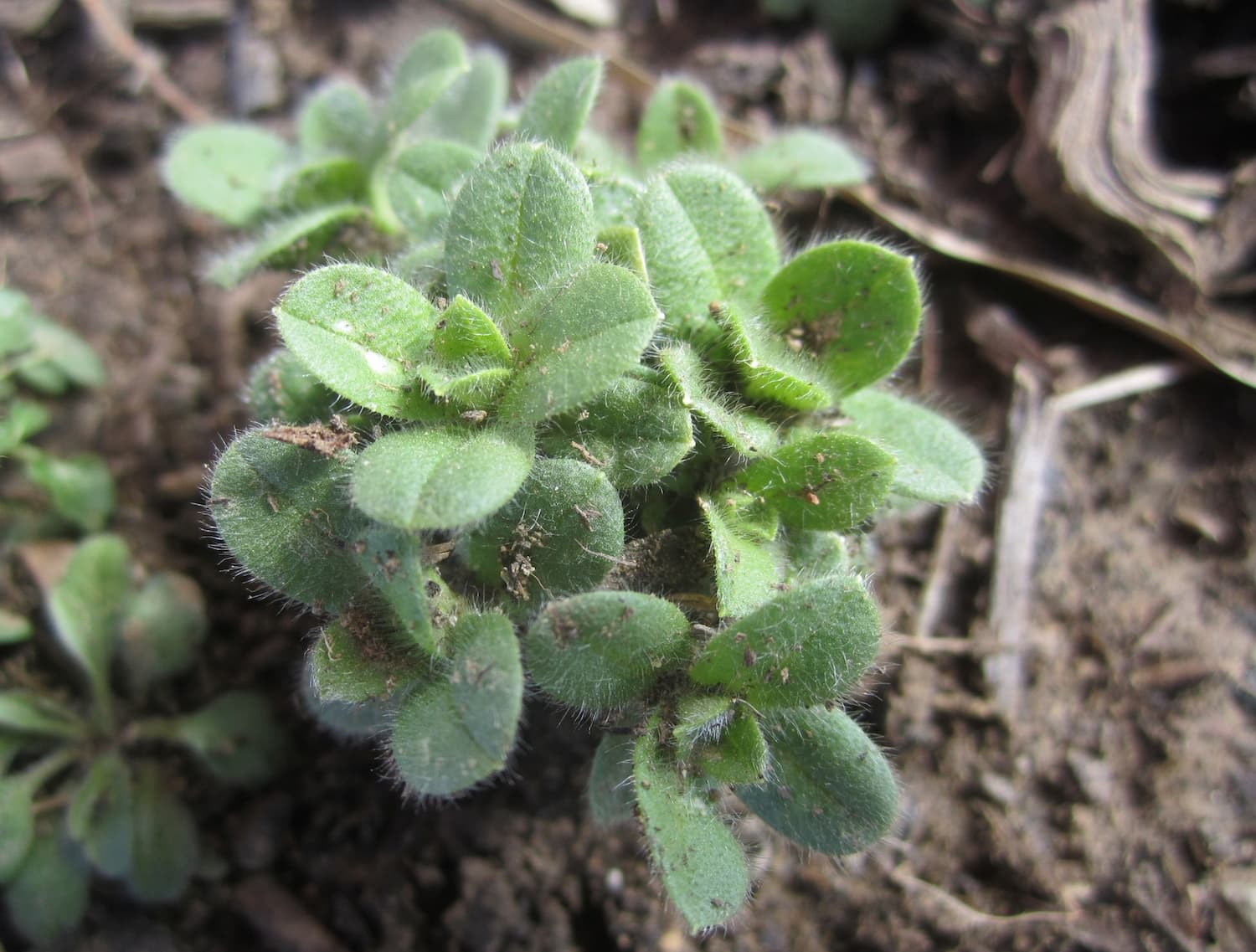
Mouse-ear chickweed is also edible but too hairy to be palatable.
Cerastium spp. (often C. vulgatum or sometimes C. arvense, also known as field chickweed)
Caryophyllaceae (Carnation / Pink) family
- edible lookalike; comparable flavor
- similar size and growth habit
- all parts completely covered in fine hairs; this trait makes it much less desirable than its cousin
Scarlet Pimpernel
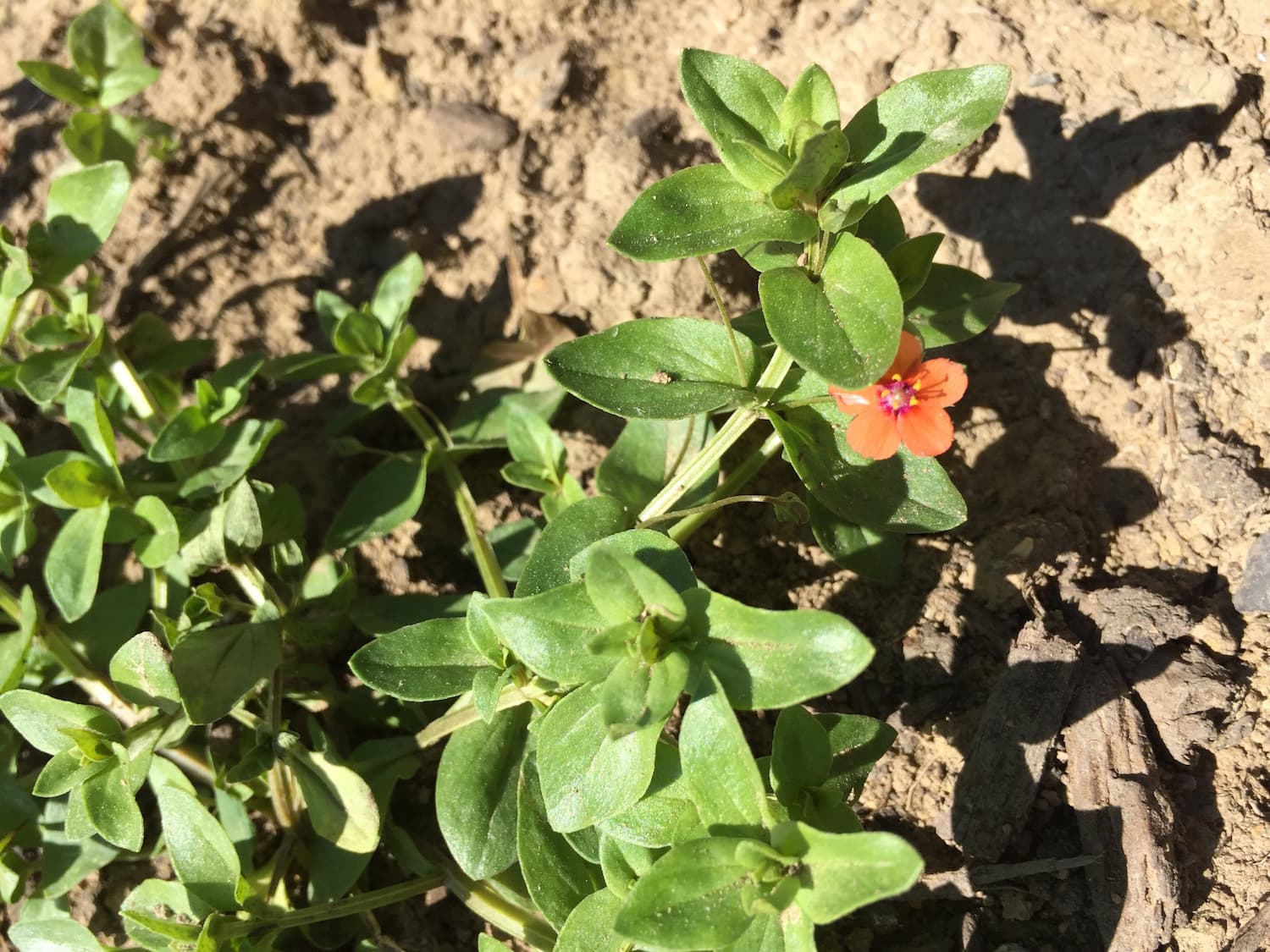
Scarlet pimpernel is toxic but easily distinguished from common chickweed thanks to its pink-orange flowers and lack of hairs.
Anagallis arvensis
Primulaceae (Primrose) family
- toxic lookalike; potentially fatal to humans and animals, though you'd need to consume a very large quantity
- similar growth habit; prefers similar growing conditions
- sometimes found growing among or adjacent to patches of chickweed
- flowers are shades of pink, orange and red — chickweed always has white flowers
- no hairs on stems—chickweed always has one line of hairs on its stems
- often has dark red spots on underside of leaves—chickweed never has red spots
- flavor is sharply bitter and unpleasant—chickweed has a very mild and pleasant flavor
Foraging North America
Did you find this article helpful?
This is an excerpt from Foraging North America: The Botany, Taxonomy and Ecology of Edible Wild Plants.
Foraging North America is a 12-week crash course designed to arm you with a functional working knowledge of botany and taxonomy that you can take with you out onto the land to fast-track the ID process and boost your confidence when gathering wild foods for the first (or five-hundredth!) time.
You'll get a practical education in ecological literacy by applying the ethos of conservation through use—the (surprisingly) radical notion that humans can, in fact, have a positive impact on the environments that we move through.
Food is everywhere—you just need to know what to look for!